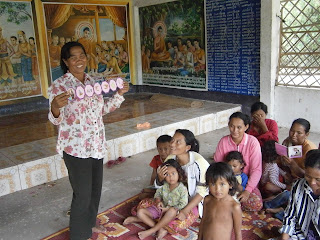After the train ride, we arrived in Danang, where we took a thirty-minute taxi ride to nearby Hoi An. After settling in to our room, we rented a couple of bicycles and looked at a few places where we might get clothes made. If you aren't familiar, Hoi An is internationally known for inexpensive, quick tailoring. I ended up with a pair of nice shorts and Leah got a new dress and shorts, all of which was completed within twenty-four hours.
Okay, so a little bit about Hoi An. Hoi An, with a population of 120,000 is a UNESCO World Heritage site. This well-preserved town serves as a fine example of a Southeast Asian trading port from the 15th-19th centuries. The town is overrun with tourists (I know since I was one of them), so the majesty of the place gets a little lost in how hectic it seems upon arrival. However, during our second day there, when it became easier to get our minds beyond the masses of people, the town became charming, beautiful and inviting. The second morning we were there, we rode bikes across one of the bridges to a small island where we perused an ex-pat owned bookshop. Some of these books I'm fairly sure I would have never happened upon otherwise, and that would have just been a terrible, terrible shame. Among the gems:

Ah, yes. Badger and Beano. Fine companions they were. I wonder if they would have traveled well together with The Woman Who Rides Like a Man (another artful selection). I'll never know.
Later, we purchased tickets for 90,000đ/each (about $4.50) which allowed us to enter five sites in the Old Town of Hoi An. One was a home from the early 19th Century, Tán Ký which flooded so often (and in such abundance) that they replaced a good portion of the second floor with a manual lift to preserve everything downstairs during the rainy seasons; a rain in the 1960s flooded the house almost to the top of the ground floor. The other site we saw was a Chinese Assembly Hall, called Phúc Kiến which dates from 1757.
.JPG)
.JPG)
Speaking of food (was I talking about food? I don't think I was, but that's alright, because who doesn't love hearing about food?), Leah and I were able to take a couple of cooking classes (for more pictures, check out Leah's blog) for very cheap. We found a place called "Green Moss," where the owner showed us how to make vegetarian cau lau (a dish specific to Hoi An since traditionally it was prepared with water from a particular well), pumpkin soup, and mì quảng (Vietnamese nachos [really]):
Vegetarian cau lau (uhh)
Mì Quảng (See. I told you. Vietnamese nachos)
We didn't learn how to make this smoked eggplant but it was amazing
Here are some more photos from Hoi An:
More sweet treats at the market
Meat Newtons
Terrifying
Hoi Anese paper lanterns at the night market
- Omelets (best if enjoyed with large wedge of Laughing Cow cheese smooshed in the middle)
- Bottomless Vietnamese-press coffee
- Mangoes
- Mangoes
- Bananas
- Watermelon
- Chocolate croissants
- Doughnuts
- Bread rolls
- Toast (complete with butter and strawberry preserves)
- Tomatoes and cucumbers
- Milk
- Fried rice + fried Ramen noodles (not a favorite but necessary nonetheless to illustrate the extravagant nature of this breakfast)
After too few of these amazing breakfasts it was already time to return to Ho Chi Minh City where we'd spend one day before returning to Cambodia. The trip was so relaxing and I'm glad I had another opportunity to see more of the southern half of Vietnam. Hope this post finds you well.
Talk to you soon,
Garrett
- Fried rice + fried Ramen noodles (not a favorite but necessary nonetheless to illustrate the extravagant nature of this breakfast)
After too few of these amazing breakfasts it was already time to return to Ho Chi Minh City where we'd spend one day before returning to Cambodia. The trip was so relaxing and I'm glad I had another opportunity to see more of the southern half of Vietnam. Hope this post finds you well.
Talk to you soon,
Garrett
.JPG)
.JPG)
.JPG)
.JPG)
.JPG)
.JPG)
.JPG)
.JPG)
.JPG)
.JPG)
.JPG)
.JPG)
.JPG)
.JPG)
.JPG)
.JPG)
.JPG)
.JPG)
.JPG)
.JPG)
.JPG)
.JPG)
.JPG)
.JPG)
.JPG)
.JPG)
.JPG)
.JPG)
.JPG)
.JPG)
.JPG)
.JPG)






